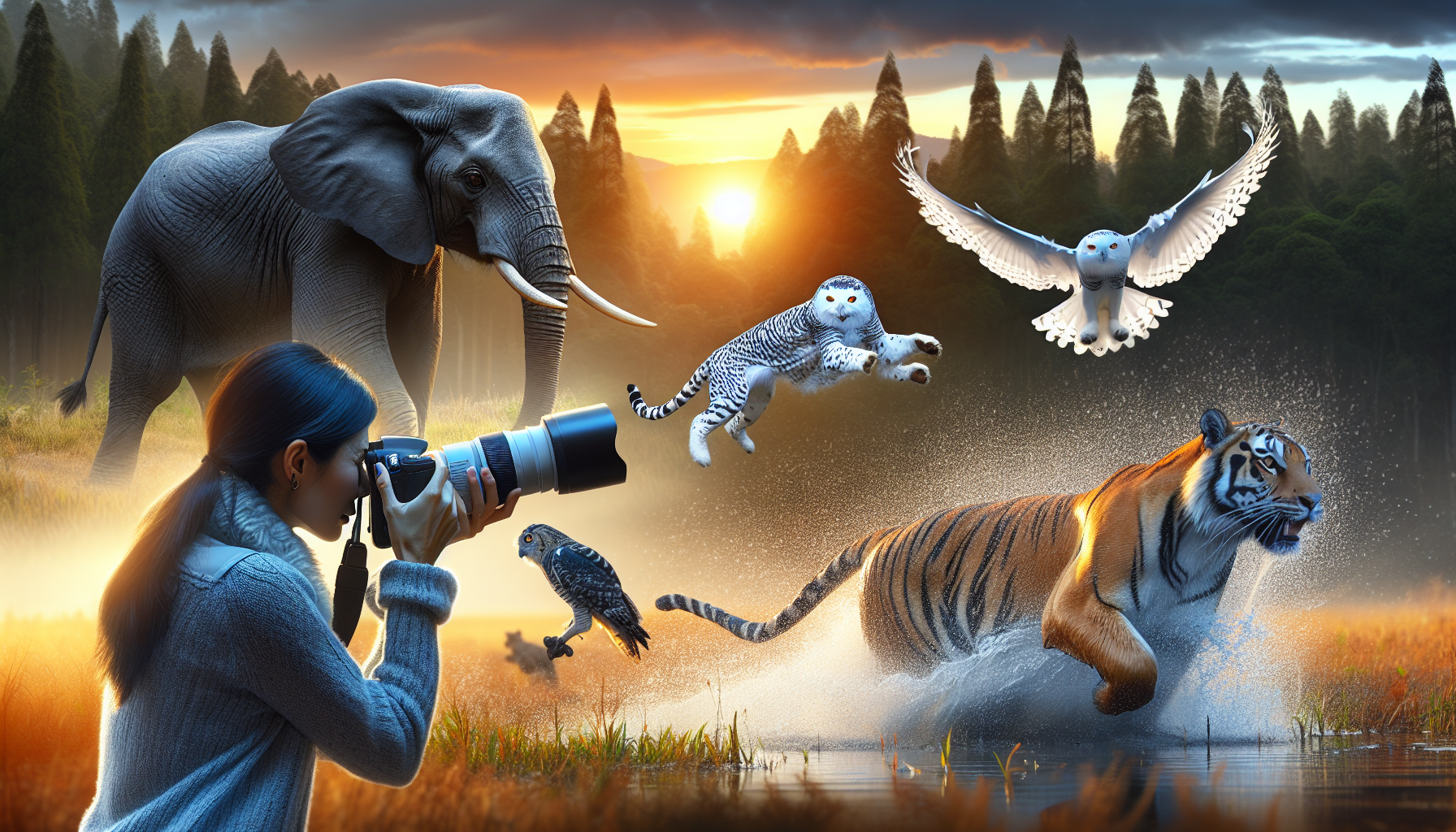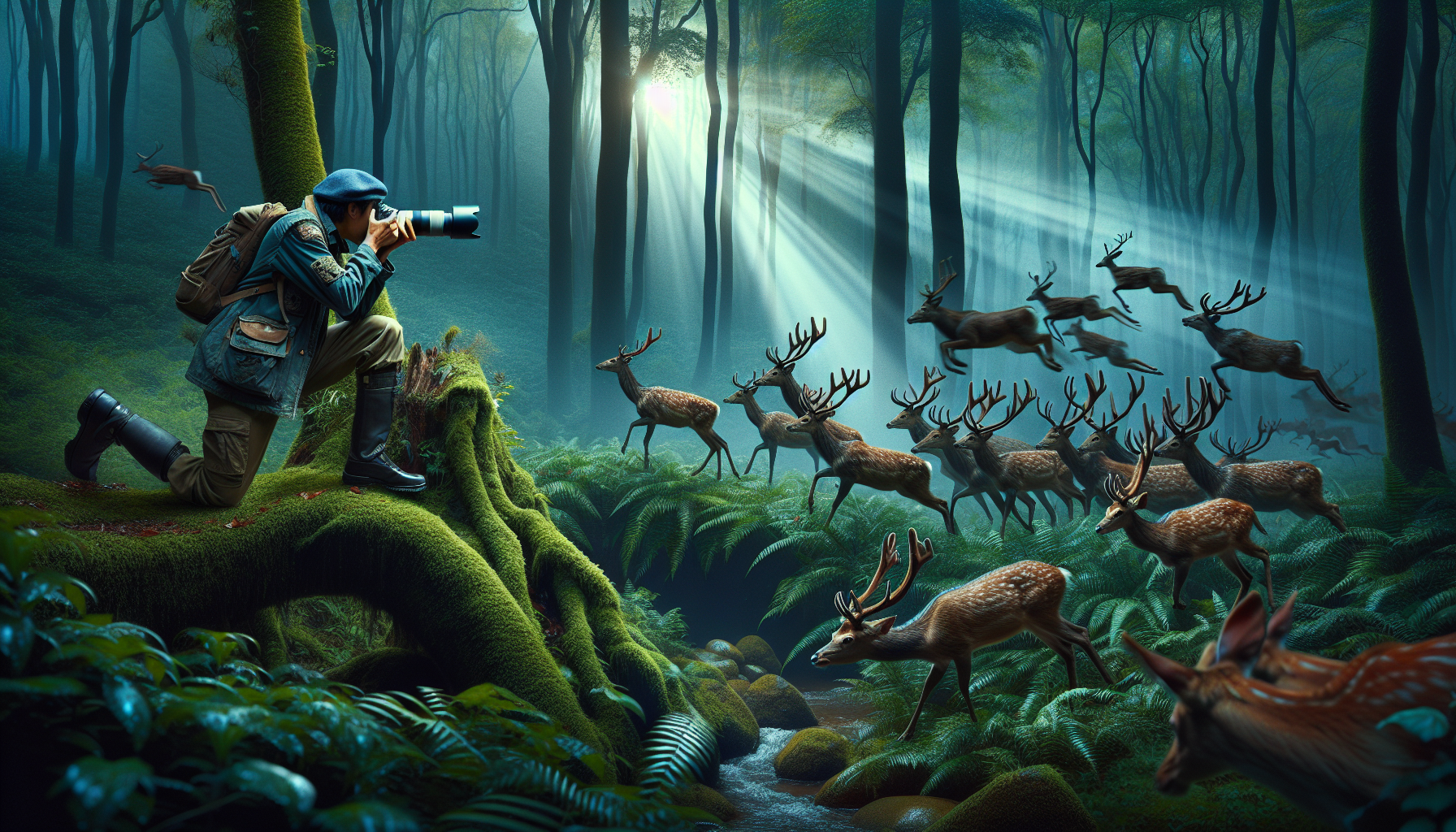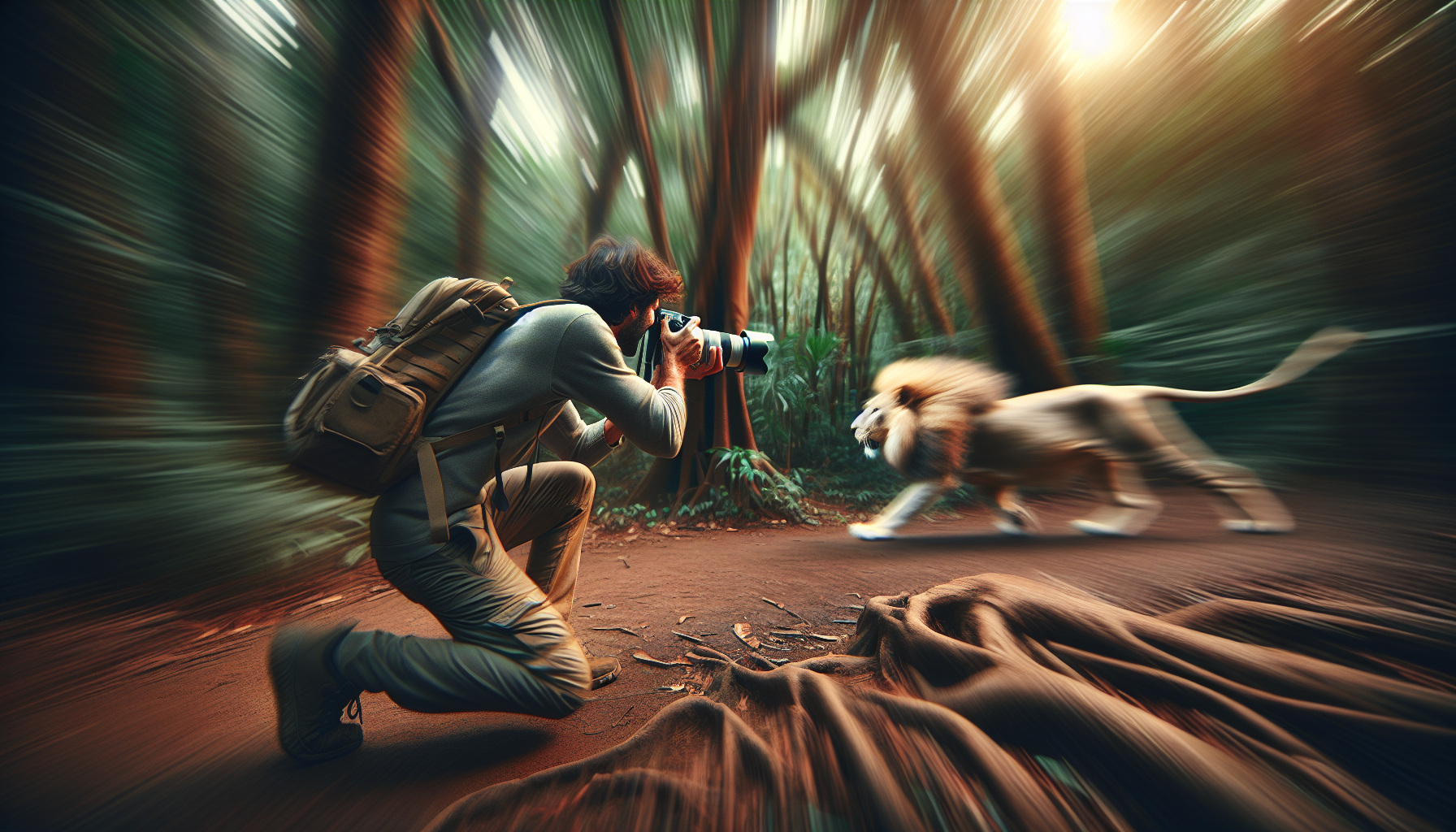Wildlife Photography Techniques: How to Capture Motion & Emotion can transform your images from ordinary to extraordinary. When I first ventured into the lush landscapes of the Margalla Hills, I quickly learned that patience and timing are crucial. Capturing the swift flight of a peregrine falcon requires anticipating its movements. By using a fast shutter speed, you can freeze motion, highlighting every feather in stunning detail. Emotions, on the other hand, often come from understanding animal behavior. Observing a playful group of langur monkeys taught me to capture candid expressions that tell a story. For more on these techniques, check out resources like National Geographic or BBC Wildlife.
Related: The Ultimate Guide to Wildlife Photography in Pakistan: Master Nature's Beauty
Essential Gear for Capturing Wildlife Motion and Emotion
When I embarked on my wildlife photography journey across the breathtaking landscapes of Pakistan, I quickly learned the importance of having the right gear. Capturing the motion and emotion of wildlife is no easy feat, but with the right tools, it becomes a rewarding challenge.
Capture the Moment with the Right Camera
Investing in a quality DSLR or mirrorless camera is crucial. In my experience, a camera with a fast autofocus system makes all the difference. It allows you to capture swift movements, such as a snow leopard leaping or a falcon diving. Cameras like the Nikon D850 or the Canon EOS R6 have served me well in the field. Their ability to shoot at high frames per second ensures I never miss a crucial moment.
Essential Lenses for Wildlife Photography
A telephoto lens is indispensable for photographing wildlife. These lenses let you get close-up shots without disturbing the animals. I personally favor a 70-200mm lens for its versatility. However, for those elusive moments, a 400mm lens is invaluable. Remember to pack a sturdy tripod to stabilize your shots, especially during those early morning or late evening shoots.
Don’t forget a durable camera bag to protect your equipment as you navigate through rugged terrains. Water-resistant bags are particularly useful during monsoon season. My trusted bag has saved my gear more times than I can count.
Lastly, never underestimate the power of patience and respect for nature. The perfect shot often requires time and understanding. Respect the wildlife and their habitats, and you’ll capture images that truly reflect their natural beauty.
For those starting out, there are great resources like National Geographic and Audubon Society that provide further insights into wildlife photography techniques.
Wildlife Photography Techniques: How to Capture Motion & Emotion in Challenging Environments

Photographing wildlife in Pakistan’s varied landscapes can be both thrilling and demanding. From the majestic snow leopards in the Karakoram to the vibrant peacocks in Sindh, each environment presents its own set of challenges. Capturing motion and emotion in these settings requires skill and patience.
Mastering Motion in Dynamic Landscapes
To freeze a moment of action, whether it’s a markhor leaping over rocky terrain or a migratory bird in flight, understanding your camera’s settings is crucial. Use a fast shutter speed to capture crisp images of moving subjects. In the mountainous regions of Pakistan, where light changes rapidly, you might need to adjust your ISO settings to compensate for lower light conditions. I’ve found that using burst mode is invaluable when trying to capture the perfect shot of a snow leopard in motion.
Conveying Emotion Through the Lens
Emotion in wildlife photography often comes from the eyes of your subject. When photographing the elusive Asiatic black bear, patience is key. Spend time observing your subject to capture genuine expressions. A shallow depth of field can help isolate your subject from the background, drawing focus to the eyes and expression. According to a report by Reuters, building a connection with your subject can dramatically enhance emotional impact in your photos.
Here are some quick tips to capture emotion and motion:
- Use a telephoto lens to maintain a respectful distance without missing details.
- Practice using manual focus for sharper images in dense vegetation.
- Carry extra batteries and memory cards – cold climates can drain batteries quickly.
The diversity of Pakistan’s wildlife offers endless opportunities to create impactful images. With the right techniques, you can master the art of capturing both motion and emotion, even in the most challenging environments.
Mastering Lighting and Composition for Emotionally Charged Wildlife Photos
As a local wildlife photographer, I often find myself chasing the perfect shot across the diverse landscapes of Pakistan. From the snow-capped peaks of the Himalayas to the vibrant shores of the Arabian Sea, capturing the essence of our wildlife requires mastering lighting and composition. These elements are crucial for conveying the emotions embedded in every scene.
Illuminating the Wild: Natural Light Techniques
Understanding natural light is essential for any wildlife photographer. Early mornings and late afternoons, often referred to as the “golden hours,” provide a soft, warm glow that enhances the emotional depth of your images. During my last trip to the Deosai National Park, the golden light at sunrise transformed a simple photograph of a brown bear into a mesmerizing, emotionally charged portrait.
It’s important to adjust your camera settings to take full advantage of these lighting conditions. Use a lower ISO to maintain image quality and experiment with shutter speed to capture motion without compromising clarity. For more tips on camera settings in different lighting conditions, check out this Photography Basics Guide.
Framing Emotion: Composition Tips
Composition plays a vital role in wildlife photography. It guides the viewer’s eye and evokes specific emotions. The rule of thirds is a classic technique that creates balance and interest in your photos. I often use this rule when photographing snow leopards in the Karakoram range, placing the animal off-center to highlight their majestic surroundings.
- Leading lines can draw attention to your subject.
- Foreground elements add depth and context.
- Negative space can emphasize solitude or freedom.
For those eager to explore more about capturing Pakistan’s unique wildlife, our comprehensive guide, The Ultimate Guide to Wildlife Photography in Pakistan, offers in-depth insights and techniques.
Remember, each photo is a story waiting to be told. By mastering lighting and composition, you can ensure your images resonate with viewers, capturing not just the scene, but the emotion of the wild.
Wildlife Photography Techniques: Capturing Genuine Emotion in Animal Behavior
Capturing the true essence of animal behavior requires both patience and understanding. As a wildlife enthusiast in Pakistan, I’ve spent countless mornings in the lush forests of the Margalla Hills. Here, I’ve observed the local fauna and learned unique techniques to photograph their genuine emotions.
Understanding the Language of Animals
To capture a compelling image, understand the subject’s behavior. Spend time observing animals before clicking the shutter. Notice the playful antics of the Rhesus macaques. Their interactions often mirror human emotions, making them fantastic subjects. This approach not only helps in predicting their next move but also enables you to capture those fleeting emotional moments.
When photographing the elusive snow leopard, patience is key. These majestic creatures express emotions subtly through body language. Look for the gentle sway of their tails or the intensity in their eyes. Such details add depth to your photographs.
Tools and Techniques for Capturing Emotion
Utilize a telephoto lens to maintain a respectful distance while capturing intimate shots. This helps in documenting natural behavior without intruding. Additionally, shooting in burst mode increases your chances of capturing the perfect moment. In my experience, the early morning light in the Cholistan Desert creates a magical backdrop for photographing the rare houbara bustard.
- Use natural light to highlight emotions.
- Keep your camera ready to capture spontaneous moments.
- Maintain a low profile to avoid startling the animals.
Mastering these techniques is crucial to becoming a skilled wildlife photographer. By observing and understanding animal behavior, you can capture photos that tell a story. For more tips, explore resources from experts like National Geographic or World Wildlife Fund.
Editing Tips for Enhancing Motion and Emotion in Wildlife Photography

Editing wildlife photographs can be just as thrilling as capturing them. Here in Pakistan, the diverse landscapes and rich biodiversity offer immense opportunities for photographers. But, to truly convey the emotion and motion of these wild encounters, thoughtful editing is essential.
Bringing Motion to Life
One morning while photographing the majestic markhor in the Karakoram Range, I realized how subtle tweaks can enhance the perception of motion. To start, use the “motion blur” effect sparingly. Enhance the subject’s movement without losing detail. Adjusting the shutter speed during the shoot is crucial, but post-processing can make or break the final image.
Tools like Adobe Lightroom allow for precise adjustments. Use the “Radial Filter” to create a vignette effect, drawing attention to the subject. This technique highlights movement and can transform a static image into a dynamic one. When editing, I often remember the advice of a mentor: “Let nature speak, don’t overpower it.”
Evoking Emotion Through Color
Color grading plays a pivotal role in wildlife photography. The right colors can evoke powerful emotions. During a trip to Chitral, I captured snow leopards against a dramatic sunset. Adjusting the warmth and vibrancy post-shoot made the scene even more captivating.
Consider these tips when editing:
- Use the “HSL” panel to fine-tune specific colors. This can bring out subtle hues in an animal’s fur or scales.
- Adjust highlights and shadows to add depth. This can emphasize the mood of a scene.
- Experiment with black and white conversions. Sometimes, removing color focuses the viewer’s attention on textures and forms.
Editing is an art, and like all art, requires practice and patience. By focusing on motion and emotion, your wildlife photographs can come alive, telling stories that resonate with viewers. For more detailed techniques, consider exploring resources like Adobe's Editing Guides or National Geographic's Photography Tips.
Conclusion
As we wrap up this journey into the art of wildlife photography, it’s important to reflect on the unique challenges and rewards it presents. Capturing the grace of a snow leopard or the majesty of a soaring falcon in motion requires patience and skill. Remember, the goal is not just to take a photograph but to convey a story and evoke emotion in the viewer.
Techniques to Capture Nature’s Dance
Being out in the field, especially in the diverse landscapes of Pakistan, offers a plethora of photographic opportunities. From the lush green valleys of Swat to the rugged terrains of Balochistan, each setting demands a tailored approach. Mastering techniques to capture movement, like panning and using a slower shutter speed, can add dynamism to your shots. These methods require practice but can transform your work significantly.
Timing is also crucial. The golden hour, just after sunrise or before sunset, not only provides beautiful light but often sees wildlife at its most active. I recall a morning in the Thar Desert, waiting patiently for hours, only to capture a chinkara in mid-leap as the first rays of sunlight bathed the scene in gold.
Connecting with Your Subject
Beyond technical skills, connecting emotionally with your subject is vital. Animals can sense your intentions. A calm presence and respect for their space can lead to more natural and intimate shots. Researching animal behavior can also provide insights into their movements and habits, increasing your chances of capturing that perfect moment.
In conclusion, wildlife photography is a blend of technical prowess and emotional connection. As you venture into the wild, remember that each image you capture contributes to a larger narrative of conservation and appreciation for nature. For more on wildlife behavior and photography tips, consider exploring resources like the World Wildlife Fund and National Geographic. Happy shooting!
Frequently Asked Questions
What are the best techniques for capturing motion in wildlife photography?
Capturing motion in wildlife photography requires a good understanding of your camera settings, particularly shutter speed. A fast shutter speed can freeze motion, ideal for capturing birds in flight or animals on the move. Utilizing burst mode is another effective technique, allowing you to take multiple shots in quick succession to choose the best moment. Additionally, panning with a slower shutter speed can create a dynamic sense of motion while keeping the subject relatively sharp.
How can I evoke emotion in my wildlife photographs?
To evoke emotion in wildlife photographs, focus on the eyes and facial expressions of the animals, as these can convey a range of emotions. Capturing interactive moments, such as a mother with her young or animals in their natural behavior, can also elicit an emotional response from viewers. Using natural light, especially during the golden hours, can add warmth and depth, enhancing the emotional impact of the image.
What equipment is essential for mastering wildlife photography shots?
Essential equipment for mastering wildlife photography includes a DSLR or mirrorless camera with a fast autofocus system. A telephoto lens is crucial for capturing distant subjects without disturbing them, with focal lengths of 300mm or more being ideal. Tripods or monopods can help stabilize your camera, especially when using heavy lenses. Additionally, having a good understanding of your camera’s settings and practicing patience is vital to capturing those master shots.


Leave a Reply